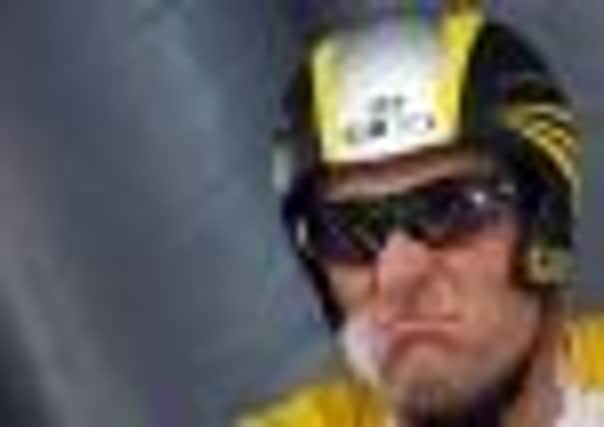New evidence in Lance Armstrong saga puts UCI in spotlight


The head of the US anti-doping agency (USADA) Travis Tygart has claimed the director of the drug-testing laboratory in Lausanne told him he provided the cyclist with the information needed to avoid positive tests for the blood-boosting agent EPO – with the meeting coming at the request of the UCI.
Concerns have previously been expressed about a “triangle” – with the UCI accepting a $100,000 donation from Armstrong in 2002 and, around that time, the UCI giving the Lausanne laboratory free use of a blood analyser worth $60-70,000.
Advertisement
Hide AdAdvertisement
Hide AdTygart, the man who brought the charges against Armstrong which led to him being stripped of seven Tour de France titles, told US television programme 60 Minutes on Showtime that the Lausanne laboratory’s director Martial Saugy had admitted he had met Armstrong and US Postal manager Johan Bruyneel in 2002 to explain how the EPO test worked – but at the request of the UCI.
The UCI insist that the meetings were arranged as a “deterrent” to show riders they were getting tough on doping and not to show them how to beat the system.
The meeting was a year after Armstrong returned a “suspect” sample from the Tour de Suisse, which had been tested in Lausanne.
Tygart told 60 Minutes, according to French newspaper Le Monde: “He [Saugy] sat beside me and said: ‘Travis, there is a sample from Lance Armstrong that indicates Lance Armstrong used EPO’. He [Saugy] also told us that he had been ordered by the UCI to meet Lance Armstrong and Johan Bruyneel to explain the method of detecting EPO, something that was unusual for him.
“So I asked him: ‘Did you give Lance Armstrong and Johan Bruyneel the keys to beating EPO tests?’ And he nodded to say yes. He explained to them, just the two of them. As far as I know, it’s unprecedented.
“It’s completely wrong to meet an athlete with a suspect result and explain to him how the test works.”
Tygart also confirmed that the USADA had rejected an offer of a donation from Armstrong of more than $150,000 in 2004.
He said: “It was a clear conflict of interest for USADA and we had no hesitation in rejecting that offer.”
Advertisement
Hide AdAdvertisement
Hide AdArmstrong is due to break his silence on the doping allegations on Oprah Winfrey’s TV talk show next Thursday.
The UCI has now set up an independent commission which includes Baroness Tanni Grey-Thompson among its members, to investigate USADA’s findings – including any payments from Armstrong to the organisations. The findings are expected before June.
A UCI spokesman insisted it had never tried to cover up the meeting.
He said: “The UCI organised meetings with some riders to make them aware of the steps we were taking.
“We never met to tell them how to beat the system – the purpose was to say we are working in this direction, it was just an information policy and a deterrent.
“It happened with many riders and many teams, we have never denied this meeting took place in order to inform him [Armstrong] and his team. There is nothing to hide, we are trying to be very transparent.”
And Swiss Cycling president Richard Chassot has defended the Lausanne laboratory, saying it has often taken a tough stance on doping. Chassot said: “In many cases, notably the [Floyd] Landis affair, they haven’t been afraid to put themselves in danger.
“Martial Saugy is a good and serious guy, who has often taken a strong position against doping.
Advertisement
Hide AdAdvertisement
Hide Ad“Regarding the samples tested, there are only numbers on a tube.
“At the laboratory in Lausanne, they couldn’t say to themselves: ‘This is Armstrong’s sample, he can’t be positive.’
“If something happened, it’s at UCI level.”